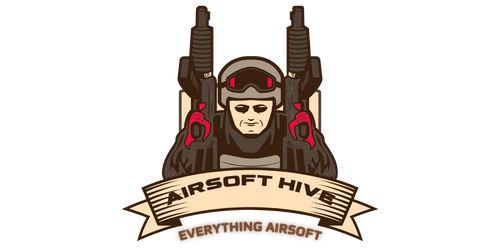In this article, you will explore the essential tips and techniques for utilizing airsoft target designation and marking effectively. Whether you are a seasoned airsoft player or just starting out, understanding how to accurately designate targets and mark them can significantly enhance your gameplay experience. By following these guidelines, you will be able to communicate with your teammates more efficiently, increase your tactical advantage, and ultimately achieve victory on the field. So, let’s dive into the world of effective target designation and marking in airsoft!
The Importance of Target Designation and Marking
Target designation and marking play a crucial role in the world of airsoft. By accurately identifying and marking targets, players can enhance training realism, improve tactical communication, increase target engagement efficiency, and enhance situational awareness. Whether participating in casual airsoft games or undergoing more intensive training exercises, understanding and utilizing effective target designation and marking techniques can greatly enhance the overall airsoft experience.
Enhancing Training Realism
One of the key benefits of target designation and marking in airsoft is its ability to enhance training realism. By designating and marking targets, players can create a more realistic environment that closely mirrors actual tactical situations. This allows participants to develop and refine their skills in a setting that closely resembles real-world scenarios. Realistic target designation and marking techniques help players train their eyes and minds to quickly recognize and engage targets, helping to improve their overall performance on the field.

Improving Tactical Communication
Clear and effective communication is essential in any team-based activity, and airsoft is no exception. Target designation and marking provide a common language that allows players to effectively communicate the location and status of targets to their teammates. By utilizing visual, audio, tactile, or electronic markers, players can convey important information quickly and precisely, enabling more efficient communication and coordination among team members. This not only leads to better teamwork but also minimizes the risk of friendly fire incidents.
Increasing Target Engagement Efficiency
Target designation and marking techniques can significantly increase target engagement efficiency. By clearly designating and marking targets, players can quickly identify and prioritize threats, enabling faster and more accurate engagements. This efficiency is particularly crucial in high-pressure situations where split-second decisions have to be made. By utilizing effective methods of target designation and marking, players can optimize their response time and increase their overall effectiveness on the field.

Enhancing Situational Awareness
In the heat of battle, maintaining situational awareness is paramount. By designating and marking targets, players can enhance their overall situational awareness by keeping track of enemy movements and identifying potential threats. This increased awareness allows players to make informed decisions and adapt to changing circumstances on the battlefield. Being able to effectively designate and mark targets aids in maintaining a clear picture of the current situation, ultimately leading to better strategic decision-making.
Types of Airsoft Target Designation and Marking
There are several types of target designation and marking techniques that airsoft players can utilize to enhance their gameplay and training experiences. These techniques are divided into four main categories: visual marking, audio marking, tactile marking, and electronic marking. Each category offers unique advantages and can be used in various situations depending on factors such as target visibility, recognition, distance, and environmental conditions.

Visual Target Designation and Marking
Visual marking involves using visual cues to designate and mark targets. This type of targeting is often the most common and widely used, as it provides a clear and easily recognizable identification system. Colored targets, target silhouettes, and glow-in-the-dark markings are all effective visual marking techniques that can be employed. Colored targets, such as flags or armbands, allow for quick identification of friend or foe, while target silhouettes offer a realistic representation of human targets. Glow-in-the-dark markings are especially useful for low-light or night-time scenarios, allowing players to continue target identification and engagement when visibility is reduced.
Audio Target Designation and Marking
Audio marking involves using sound cues to designate and mark targets. This type of targeting can be beneficial in situations where visual cues may be limited or compromised. Sound emitting devices, pre-recorded audio cues, and voice commands are all effective audio marking techniques. Sound emitting devices, such as small speakers or devices that emit gunfire sounds, can provide realistic audio feedback during engagements. Pre-recorded audio cues, like simulated gunfire or enemy voices, can be triggered to improve training realism. Voice commands from team leaders can also be utilized to direct team members and designate targets.

Tactile Target Designation and Marking
Tactile marking involves using touch or physical sensations to designate and mark targets. This type of targeting can be particularly useful in situations where visual and audio cues may not suffice or are impractical. Vibrating targets and tactile indicators are commonly used tactile marking techniques. Vibrating targets can be attached to players or objects to simulate the sensation of being hit and signify a successful engagement. Tactile indicators, such as tag systems or velcro patches, can be used to physically mark target locations for easy identification.
Electronic Target Designation and Marking
Electronic marking involves using electronic devices to designate and mark targets. This type of targeting relies on advanced technology to provide accurate and efficient means of target identification. Laser designators, radio frequency identification (RFID), and infrared markers are all examples of electronic marking techniques. Laser designators emit a laser beam that can be directed onto a target to designate its location accurately. RFID tags can be attached to targets to allow for quick identification through electronic scanning systems. Infrared markers, often used in conjunction with night vision equipment, emit infrared signals that can be detected by compatible devices to designate targets.

Effective Target Designation and Marking Techniques
To maximize the benefits of target designation and marking, it is essential to employ effective techniques. Clear and concise symbols should be used to ensure easy recognition and understanding among players. Consistency in application is crucial, as it allows for seamless communication and reduces the likelihood of confusion. Proper placement of markers ensures that they are visible and accessible to all team members. Lastly, dynamic target marking, which involves updating target markings as the situation evolves, helps maintain accuracy and situational awareness.
Training Scenarios Utilizing Target Designation and Marking
Target designation and marking techniques can be applied to various training scenarios, further enhancing the overall effectiveness of airsoft training. In hostage rescue scenarios, accurate target designation can mean the difference between success and failure. Room clearing exercises can be made more realistic with clear target markings that simulate the presence of hostiles. Ambush scenarios can benefit from effective target designation to ensure quick and accurate engagements. Sniper operations rely on precise target marking to identify high-value targets for elimination. Convoy protection exercises can be enhanced with target designation and marking techniques to simulate real-life threats and response procedures.
Conclusion
Target designation and marking are crucial aspects of airsoft that greatly enhance training realism, improve tactical communication, increase target engagement efficiency, and enhance situational awareness. By utilizing visual, audio, tactile, or electronic markers, airsoft players can effectively designate and mark targets, ensuring better teamwork, faster decision-making, and overall improved performance on the field. Understanding the various techniques and factors involved in target designation and marking allows players to optimize their gameplay experience and become more effective airsoft participants.


